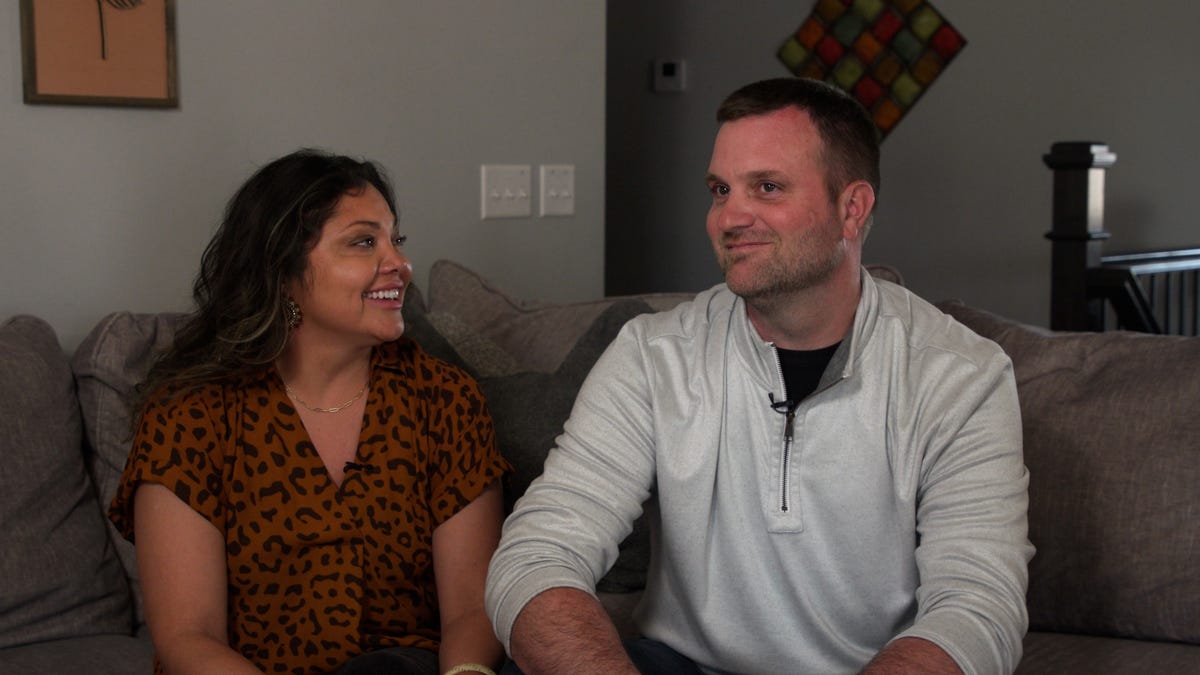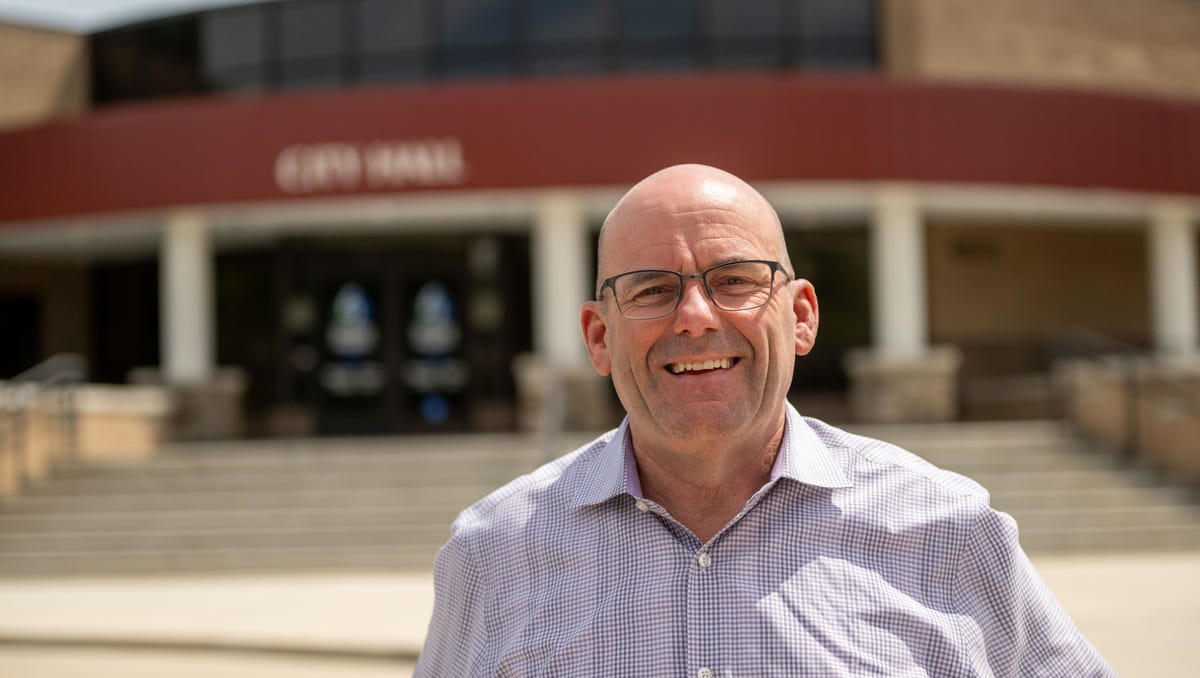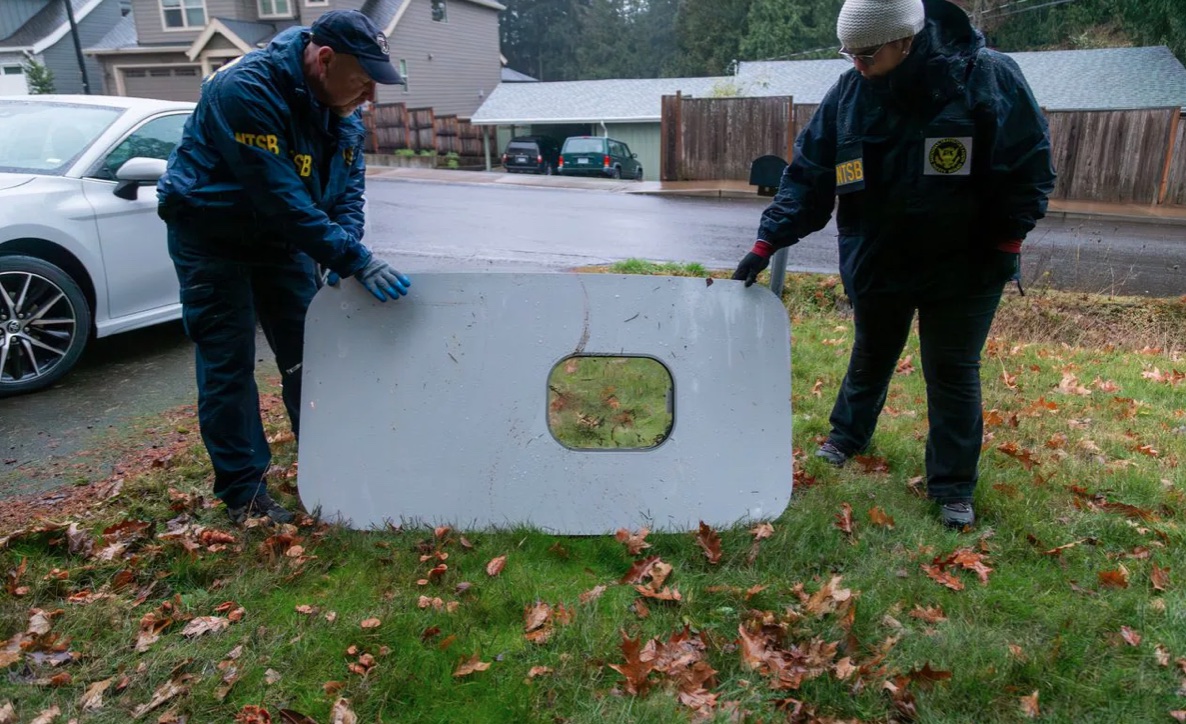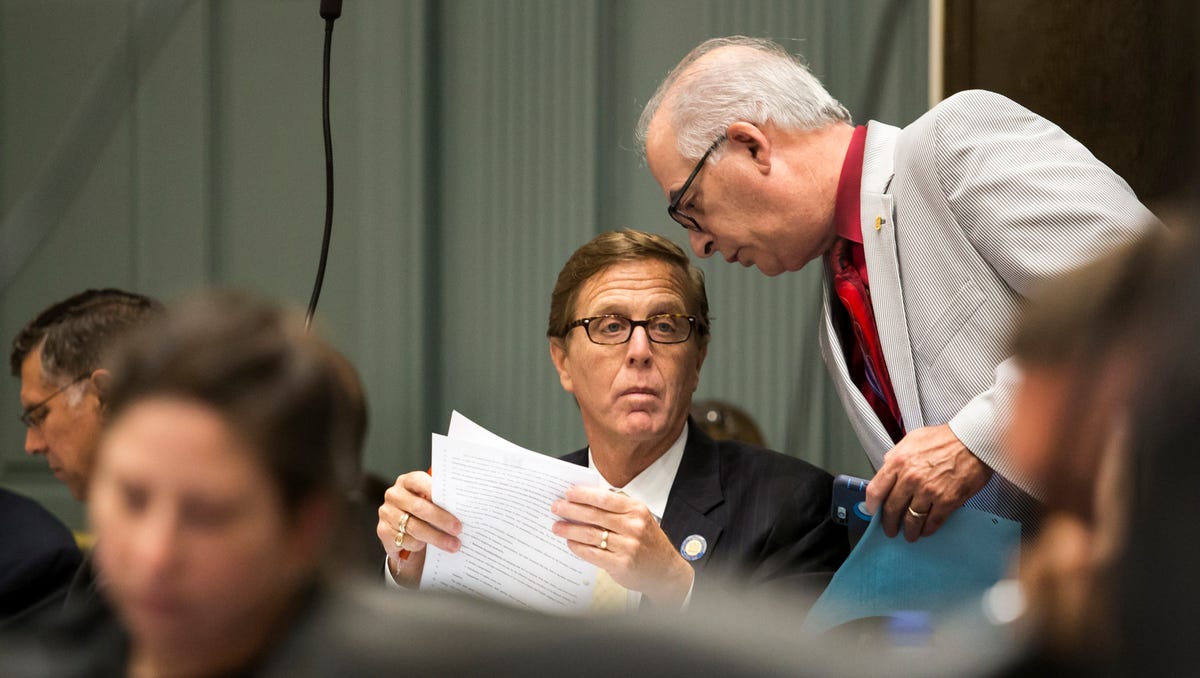South Dakota
‘The kids are what you love:’ South Dakota foster families share their stories

Editor’s note: This is the eighth in a series of stories on children that Jackie Hendry, producer and host of South Dakota Public Broadcasting’s “South Dakota Focus” is writing for South Dakota News Watch. Each month, she previews the upcoming show.
SIOUX FALLS, S.D. – South Dakota has more children in the foster system than families to care for them. On average, there were more than 1,000 children in the system in any given month last year, but just over 800 foster families licensed statewide.
Children enter the system for a number of reasons, but the leading causes of foster placement in the state are neglect, parental substance abuse and parental incarceration, according to the National Data Archive on Child Abuse and Neglect.
The shortage of foster families is not a new problem.
In May 2021, Gov. Kristi Noem launched the Stronger Families Together initiative to highlight the need. In an email, a spokesperson for the Department of Social Services said 2,000 families have reached out for more information since the program’s launch, and 669 families have completed screening and training to become licensed foster care providers.
But the need persists.
“Foster families are needed in all communities across South Dakota, most critically in the western and central parts of the state,” the DSS spokesperson continued. “Foster families are needed for all ages and genders; however, there is a significant need for more Native American foster families. The Department also holds a need for foster families who can be available to care for sibling groups, older children, and children whose special needs require ongoing medical, mental health, and/or behavioral health care. Foster families capable of supporting services to address the developmental needs of children are also needed.”
Current foster families receive regular communication from the Department of Social Services on children who need placement options. Two foster families in the Sioux Falls area — where most foster families in the state are located — shared their stories in hopes of encouraging other families to get involved.
Serious problems are a small part of foster care
Tammy Vande Kamp is a nurse practitioner in the mental health field in Hartford. She initially learned about foster care from her husband’s family and then from a program at their church. Their first placement was a 10-day-old newborn they took home from the neonatal intensive care unit.
“He stayed with us for eight months, and then we were able to reunify him with his mom,” said Vande Kamp.
She and her husband have been foster parents for two years. Like many foster families, the Vande Kamps get regular emails from the Department of Social Services looking for placements for kids with nowhere else to go.
“I mean – we’re full. We have right now four foster children and two biological children living in our home, so we’re at capacity, and it’s sad,” said Vande Kamp.
She worries that press coverage of the foster system is too focused on the horror stories.
“We hear about the foster children that maybe run away. Or we hear about the foster parents that abuse the foster children or the kiddos that end up going home and they end up abused or unfortunately, maybe even they’re killed. It’s a very, very small part of foster care,” Vande Kamp said. “We have been fortunate to have some beautiful children in our home. Yes, there are challenging times. Yes, we have hard times, they have hard times. But there is so much good that comes out of them and us.”
Attachment to foster family helps kids later in life
While the common stigmas about foster care are likely one deterrent for potential foster families, another source of hesitation Vande Kamp often hears is a fear of getting too attached.
“I used to feel the same way,” she said. “I learned through classes and through the program that we were teaching them how to be attached. We’re trying to teach these children to attach so that when they’re older, when they’re adults, they can attach to other people. They can trust people.”
Vande Kamp said she was sad saying goodbye to her first foster child, but she was also happy to reunify him with his mother.
“I had a peace knowing that we gave him what he needed for the time he was with us,” she said. “I knew that we gave him the best of us that we could give him, and we gave him a good start for her to then continue on.”
There are several Facebook groups for foster parenting, including one Vande Kamp joined for foster parents in Minnehaha and Lincoln counties. She consistently saw posts asking for a support group for foster parents.
“So we started one,” said Vande Kamp.
Communities challenged to lend support beyond toys
What began as a gathering at a Scooters coffee shop now is a monthly meeting at Tre Ministries in Sioux Falls. She acknowledges it can be a safe place to vent, but it’s mostly an opportunity for foster parents to get advice from each other about state forms and available services.
“Because you can ask your social worker, but sometimes they’re busy and they don’t have time to call you back,” said Vande Kamp. “And for me personally, my best resource has been other foster moms who have been in this longer than I have.”
The informal support group is one kind of resource Vande Kamp sees lacking for foster families and the children they care for.
“I think we have great resources for things. We have great resources for clothes, diapers, toys,” said Vande Kamp. “We don’t have great resources for people.”
For example, Vande Kamp said she’d love to see a movement to provide frozen meals for foster families to occasionally ease the burden of meal prep on top of other obligations. More than that, she wants to see communities rise to the occasion to serve children in need.
“One thing my children don’t need more of is toys. They don’t need more toys. They don’t need another blanket. And they don’t need another stuffed animal. They need people,” she said. “They need other adults in their lives who can be positive role models. And certainly the Native American population of children need positive Native American role models.”
Indigenous foster care in short supply
Native American children made up 74% of children in the state foster system as of May 2023. The federal Indian Child Welfare Act prioritizes placing Native children with relatives or other Native families. But of the 808 state-licensed foster families in South Dakota last year, just 86 were Native American.
Brandy and Scott Louwagie of Sioux Falls were one of those families.
Brandy is a member of the Rosebud Sioux Tribe. They’ve been fostering for 10 years and have almost exclusively had Native children placed with them. The Louwagies adopted their three children from foster care and were fostering an infant girl earlier this month.
“The responsibility that comes with being an ICWA home is just making sure those children, if they’re connected with their culture, to continue that connection,” said Brandy. “And if they’re not, introduce them to that side of their culture so that if they are seeking that when they’re older or something, it’s not something brand new to them when they’re trying to seek that heritage.”
Brandy said her Native identity has helped her develop a rapport with the birth relatives of some foster placements.
“The primary goal is always reunification of a child with their biological family,” she said. “As foster parents, it’s our job and our duty to help with that.”
Brandy and Scott work for Daktronics, and both travel frequently for their role. One resource they rely on is child care.
“If we didn’t have child care, there’s absolutely no way we could foster,” she said.
“It’d be too much impact on our lives,” he added. “We’d have to get new jobs.”
The Lost Children: An Argus Leader/South Dakota Searchlight investigation into ICWA in South Dakota
Benefit is worth the time commitment
Like other foster families, the Louwagies regularly receive emails and phone calls about children who need a place to stay.
“Our licensing person just came in to relicense us,” Brandy said. “You tell them as a foster home how many children you can accept. … So she says, ‘I know your hands are full, but can you take on more kids?’ And we’re like, we can’t. We do what we can, as much as we can. But she said, ‘We have so many children who need a placement.’”
The Louwagies also hear prospective foster parents worry about the time commitment or that they would get too attached to kids they’d ultimately return back to their families.
“We are so busy all the time,” said Brandy, gesturing to Scott. “I mean, we have sports, doctors’ visits, both of us travel — so pretty much one of us is always doing almost everything. And the thing is, yeah, the kids are what you love. That’s the only reason we do foster care is because of the kids.”
Both Brandy and Scott agree that they keep fostering because they value the chance to give children a sense of safety and security in a traumatic point in their lives.
“You just have to understand: If I can take the hurt of a child away, that’s what we’ll do,” Brandy said.
How to watch ‘South Dakota Focus’ on SDPB
The next episode of “South Dakota Focus” airs on Thursday, April 25, at 8 p.m. Central time / 7 p.m. Mountain time. It can be viewed on SDPB-TV 1, Facebook, YouTube and SD.net
The episode includes:
- Stories from two former foster children who aged out of the child welfare system
- Stories from foster families about their challenges and what keeps them motivated to care for children
- The state Legislature’s creation of the Indian Child Welfare Advisory Council within the Department of Social Services

South Dakota
What is the controversy surrounding South Dakota Governor Kristi Noem and Kim Jong Un?

Encounter with Kim Jong Un: Fact or Fiction?
In her memoir, Noem recounts a purported meeting with North Korean leader Kim Jong Un during her tenure as South Dakota’s representative in Congress. She describes the encounter as part of her global diplomatic engagements. However, doubts arose regarding the accuracy of this assertion, prompting Noem’s spokesperson to clarify that the mention of Kim Jong Un was an error, as mentioned in a report by TIME. Ian Fury stated that the book’s publisher would address the inclusion of the North Korean leader among world figures, attributing it to a mistake.
VP Contender Status and Fallout
Before the controversy surrounding her memoir surfaced, Noem was considered a potential Vice Presidential candidate for former President Donald Trump. However, reports indicate that she had fallen off the shortlist even before these revelations emerged. The book’s controversies have brought further scrutiny to Noem’s political standing and raised questions about her suitability for higher office.
Memoir’s Canine claims
Aside from the purported encounter with Kim Jong Un, Noem’s memoir drew criticism for her admission of shooting her 14-month-old dog, Cricket. Noem justified her actions by citing the dog’s aggressive behavior, which allegedly posed a threat to livestock and people. This revelation sparked outrage among animal welfare advocates and the public, further overshadowing the book’s release.
Defending Her Actions
In response to the backlash, Noem defended her decision to euthanize Cricket, stating that South Dakota law permits the disposal of dogs that attack and kill livestock. She emphasized her commitment to upholding the law and assuming responsibility, whether in ranch management or politics. Despite facing condemnation, Noem reiterated her stance on adhering to legal mandates and fulfilling her obligations as a rancher, pet owner, and community member, according to a TIME magazine article.
Political Career and Legacy
Kristi Noem, a Republican, made history as South Dakota’s first female governor, securing reelection in 2022 after serving in Congress since 2011. However, the controversies surrounding her memoir have raised questions about her leadership and judgment, potentially impacting her political trajectory and legacy.
FAQs
What is the ethnicity of the governor of South Dakota?
Kristi Noem, born to Ron and Corinne Arnold in Watertown, South Dakota, spent her formative years with her siblings on their family ranch and farm in rural Hamlin County. With Norwegian ancestry, Noem graduated from Hamlin High School in 1990, where she was crowned South Dakota Snow Queen.
How many children does the governor of South Dakota have?
Governor Noem is nurturing her three children, Kassidy, Kennedy, and Booker, alongside her husband Bryon, fostering a strong bond rooted in familial love.
Disclaimer Statement: This content is authored by a 3rd party. The views expressed here are that of the respective authors/ entities and do not represent the views of Economic Times (ET). ET does not guarantee, vouch for or endorse any of its contents nor is responsible for them in any manner whatsoever. Please take all steps necessary to ascertain that any information and content provided is correct, updated, and verified. ET hereby disclaims any and all warranties, express or implied, relating to the report and any content therein.
South Dakota
How the state, tribes and federal government are working to curb SD’s syphilis epidemic • South Dakota Searchlight

Tyler Broghammer leaves his office nearly every day armed with a small blue cooler.
Inside is a weapon against South Dakota’s syphilis epidemic: syringes of penicillin. The sexually transmitted infection case manager at Oyate Health Center in Rapid City also carries rapid STI tests and condoms on his near daily drive around town, meeting with people he’s learned may have the disease.
Broghammer is one of two STI case managers at Oyate Health finding and treating people who have syphilis. The organization is one of several working to address the epidemic in South Dakota through collaborative partnerships.
COVID-19 ‘completely overwhelmed’ screening
Syphilis is a bacterial infection most often spread through sex that can be cured, but can cause serious health problems without treatment and can be spread from mothers to unborn babies.
South Dakota experienced a 2,493% increase in adult syphilis cases from the five-year median in 2022, according to the state Department of Health, with 1,504 cases reported — the highest rate of syphilis cases in the country at the time. That was a 90% increase from 2021.
The number of syphilis cases in the state dropped in 2023 to 1,374 cases, according to the state’s infectious disease dashboard.
Syphilis cases are down by 335 cases in the first quarter of this year compared to 2023, according to a state Department of Health spokesperson.
The state had the second highest rate of congenital syphilis in the country in 2022 with 40 cases, which is 351.8 cases per 100,000 births, and was a 150% year-over-year increase. The state saw a 1,233% increase in congenital syphilis among infants from the five-year median in 2022.
The state reported 54 congenital syphilis cases in 2023 and 18 through April of that year. So far this year, there have been nine reported cases.
Syphilis was close to being eradicated in the United States in the 1990s, but cases in South Dakota were increasing in the years prior to the COVID-19 pandemic. Syphilis infections nationwide have climbed rapidly in recent years, reaching a 70-year high in 2022, according to the most recent data from the Centers for Disease Control and Prevention. That rise comes amid a shortage of penicillin, the most effective treatment, due to the nationwide increase in syphilis cases. The shortage is predicted to last until the end of this year.
Hospitals were overwhelmed with treating the coronavirus in 2020 and 2021 and patients were hesitant to get screened or treated for STIs, said Meghan Curry O’Connell, a member of the Cherokee Nation and chief public health officer at the Great Plains Tribal Leaders’ Health Board in Rapid City.
“The whole system we have to make sure people are screened and treated for STIs was completely overwhelmed by COVID, like everything else,” said Curry O’Connell, who is a family physician by training. “Particularly in South Dakota, added challenges included difficulty in accessing care in very rural areas, which compounded the impacts of the pandemic.”
Native American communities hit hardest
Native American communities have been hit the hardest by the epidemic in South Dakota and nationally. About 90% of congenital syphilis cases in South Dakota are among Indigenous babies, according to the state Health Department.
Syphilis causes a range of symptoms, including rashes, sores and hair loss. But if the disease isn’t treated, symptoms may go away even though the infection remains, making it a prolific spreader unless sexually active people are educated on the disease, practice safe sex and are regularly tested, Curry O’Connell said.
The disease can potentially persist for decades if untreated, which can lead to death. If pregnant people are infected, it poses a dangerous risk to their baby; congenital syphilis can cause bone deformities, severe anemia, jaundice, meningitis and even death. In 2022, the CDC recorded 231 stillbirths and 51 infant deaths caused by syphilis nationally, out of 3,761 congenital syphilis cases reported that year.
The Great Plains Tribal Leaders’ Health Board and tribal leaders from North Dakota, South Dakota, Nebraska and Iowa have asked the federal Department of Health and Human Services to declare a public health emergency in their states. A declaration would expand staffing, funding, and access to contact tracing data across their region.
“It’s important to get treated, because we want to prevent any of those outcomes, and it’s just so easy for people to do,” Curry O’Connell said. “Most people just need one shot of penicillin if newly infected.”
The rate of congenital syphilis infections among Native Americans (644.7 cases per 100,000 people in 2022) is comparable to what the rate for the entire U.S. population was in 1941 (651.1) before doctors began using penicillin to cure syphilis, according to KFF Health News.
The risk is especially high for people with limited access to health care.
“If you’re putting off care or don’t have a regular relationship with a doctor, those people are more likely to go untreated,” Curry O’Connell said. “For whatever reason or barrier — if a person can’t get time off of work, they have a distance to travel, they don’t have immediate transportation or anything — it could end up that the symptom goes away.”
How SD entities are addressing the epidemic
Broghammer’s position is funded by a grant from the Indian Health Service. His “boots on the ground” method is the most effective way to treat patients, though it’s also a “grind,” Broghammer said.
Whether due to homelessness, financial or privacy concerns, many patients struggle to find their way to Oyate Health on the west side of Rapid City, Broghammer said. He’ll meet patients anywhere: their home, hotels or even in parking lots.
“Some days I’ll get five to six phone calls reaching out to us, which is great. Other days we’re picking up the phone and trying to locate people but might not find anybody,” Broghammer said. “It’s not just as simple as a phone call and meeting with them. We have a decent sized population of houseless relatives where it’s difficult to find them — no phone or address. Sometimes we literally have nothing to go off of.”
Some other health care systems will test for syphilis but won’t go to the patient’s location.
“Underlying all of this is it’s very resource intensive, especially in rural areas,” Curry O’Connell said. “However, there’s not anything we know of yet that can replace it. Boots on the ground, going out to talk to people, giving testing and doing what needs to be done is just basic public health work, and there’s nothing else that really works better.”
Some tribes and Indian Health Service locations are also sending nurses across South Dakota reservations to find and treat people. The state Department of Health plans to launch its Wellness on Wheels program in May, with five vans traveling across the state to provide basic health care to rural communities — including STI testing, treatment, education, counseling and referrals to community resources.
The vans will also provide pregnancy care services, safe sleep guidance and developmental screening for children, WIC services, maternal depression screening, immunizations and oral health.
“We hope to use these vans several times a week to reach clients who might not have access to one of our physical locations,” said Tia Kafke, media spokesperson for the department, in an emailed statement. “The vans will operate in the winter as much as possible, weather permitting.”
The state, tribes and tribal health board have monthly meetings about syphilis, Curry O’Connell said. IHS recommends every patient age 16 and older be screened for syphilis at least once a year. Pregnant patients should be screened three times during their pregnancy.
Broghammer often receives calls from the state Department of Health with leads on people who tested positive for syphilis.
“They save me time and energy, so I know they’re working their tails off,” Broghammer said.
The state department started piloting a rapid testing partnership with a health care provider in Mission, on the Rosebud Reservation, in December. Fifty patients were tested in the first three months with eight testing positive and being treated for the disease.
The move to rapid testing is an important development, professionals agree, because patients are able to be treated immediately rather than days or weeks later when results come in from laboratories. The department has seven normal testing centers across the state.
The number of syphilis cases in South Dakota has decreased since it peaked in 2022, though it’s still at epidemic levels. Congenital syphilis is only prevented by treating pregnant females. The number of congenital syphilis cases in South Dakota increased from 2022 to 2023.
Prenatal care, intervention key to addressing congenital syphilis
Though Broghammer sees the collaborations’ effect, he said there could be more entities working together in the state to put more boots on the ground.
Curry O’Connell said more effort is needed to test pregnant patients who aren’t receiving prenatal care. Nearly one-third of congenital syphilis cases in the first half of 2023 did not receive prenatal care, according to the state.
Most women still will interact with the health care system at some point during their pregnancy, even if they don’t receive prenatal care. They should be screened with a rapid test at that point, Curry O’Connell said.
“If someone goes into urgent care or goes in for something that’s not even pregnancy related, that would be a place to start, because a lot of women will receive some sort of care during pregnancy,” Curry O’Connell said. “It’s trying to maximize the screening potential of those visits that’s important.”
Education, Broghammer said, is an important tool.
“I think the biggest thing is to just get checked,” Broghammer said. “If you’re sexually active, be safe: get screened and get checked. Be mindful of your partners and safe sex practices.”
GET THE MORNING HEADLINES DELIVERED TO YOUR INBOX
South Dakota
South Dakota Gov. Noem admits error of describing meeting North Korea’s Kim Jong Un in new book

WASHINGTON (AP) — South Dakota Gov. Kristi Noem is releasing a new book called “No Going Back,” but on Friday her office said she would actually be going back to correct some errors — including a false claim that she once met with North Korean leader Kim Jong Un.
The Republican governor’s new book was part of an overt effort to be selected as a running mate for Donald Trump, the presumptive Republican presidential nominee, but it has already faced bipartisan backlash for a story of how she once shot her hunting dog. Then, after scrutiny of her descriptions of meetings with international leaders, her spokesperson Ian Fury said in a statement that it was an error to include Kim in a list of world leaders whom Noem has met — and the publisher would correct any future editions of the book.
Noem’s political prospects were already falling amid widespread disgust for how she recounted killing her 14-month-old wirehaired pointer named Cricket after it had shown aggressive behavior and killed her neighbor’s chickens.
In her soon-to-be-released book, “No Going Back: The Truth on What’s Wrong with Politics and How We Move America Forward,” Noem also describes instances where she has stood up to international leaders — anecdotes that would have bolstered her foreign policy experience — but those were swiftly called into question. She writes about canceling a meeting with French President Emmanuel Macron.
After The Dakota Scout first reported Noem’s descriptions of the meetings, Fury said that the book “has two small errors. This has been communicated to the ghostwriter and editor.”
In addition to the meeting with Kim, Fury said Noem also mistook the dates in which she spoke with former United Nations ambassador Nikki Haley.
“The book has not been released yet, and all future editions will be corrected,” Fury added.
In a section of the book about meeting with international leaders, Noem writes: “Through my tenure on the House Armed Services Committee, I had the chance to travel to many countries to meet with world leaders — some who wanted our help, and some who didn’t.
“I remember when I met with the North Korean dictator Kim Jong Un,” she writes. “I’m sure he underestimated me, having no clue about my experience staring down little tyrants (I’d been a children’s pastor after all).”
The description of such a meeting was quickly challenged and described as implausible by experts on U.S.-North Korea relations. When Noem was a member of the House Armed Services Committee from 2013 to 2015, relations between the two countries were tense and a congressional delegation meeting with Kim would have generated considerable awareness, said Syd Seiler, a former U.S. intelligence officer who spent decades working on the relationship with North Korea.
“Nothing like this happened,” he said, adding that he was working at the White House and State Department during that time period and was not notified of a congressional meeting with Kim.
Noem did join an international congressional trip, known as a codel, to Japan, South Korea and China in 2014.
In the book, Noem also writes that she was “slated to meet with” Macron in November last year while she was in Paris for a conference of European conservative leaders, but canceled when he made comments that she considered “pro-Hamas.”
However, Macron’s office told The Associated Press that no “direct invitation” had been made for Noem to meet the French president, though it did not rule out that she may have been invited to a Paris event that he was also scheduled to attend.
Fury said, “The governor was invited to sit in President Macron’s box for the Armistice Day Parade at Arc de Triomphe. Following his anti-Israel comments, she chose to cancel.”
Meanwhile, Noem is trying to fend off the backlash for writing about shooting her dog as well as a goat.
“Don’t believe the #fakenews media’s twisted spin,” she posted on the social platform X this week. “I had a choice between the safety of my children and an animal who had a history of attacking people & killing livestock.”
Her spokesperson, Fury, also cast scrutiny of the errors in Noem’s book as biased, saying, “The media will, of course, try and make these tiny issues huge.”
Still, members of Congress have poked fun at Noem, with Reps. Jared Moskowitz, a Democrat from Florida; Susan Wild, a Democrat from Pennsylvania; and Nancy Mace, a Republican from South Carolina; launching a Congressional Dog Lovers Caucus this week.
Moskowitz said on X that one of the group’s rules was, “You cannot kill a puppy.”
Copyright 2024 The Associated Press. All rights reserved.
-

 Politics1 week ago
Politics1 week agoGOP lawmakers demand major donors pull funding from Columbia over 'antisemitic incidents'
-

 World1 week ago
World1 week agoHamas ‘serious’ about captives’ release but not without Gaza ceasefire
-

 Tennessee1 week ago
Tennessee1 week agoHow to buy JC Latham’s Tennessee Titans jersey after 2024 NFL Draft selection
-

 News1 week ago
News1 week agoBoth sides prepare as Florida's six-week abortion ban is set to take effect Wednesday
-

 Politics1 week ago
Politics1 week agoColumbia University’s policy-making senate votes for resolution calling to investigate school’s leadership
-

 Michigan1 week ago
Michigan1 week agoMichigan State football adds DT Brandon Lane from Stephen F. Austin
-

 Politics7 days ago
Politics7 days agoHouse Republicans brace for spring legislative sprint with one less GOP vote
-

 World7 days ago
World7 days agoAt least four dead in US after dozens of tornadoes rip through Oklahoma


















